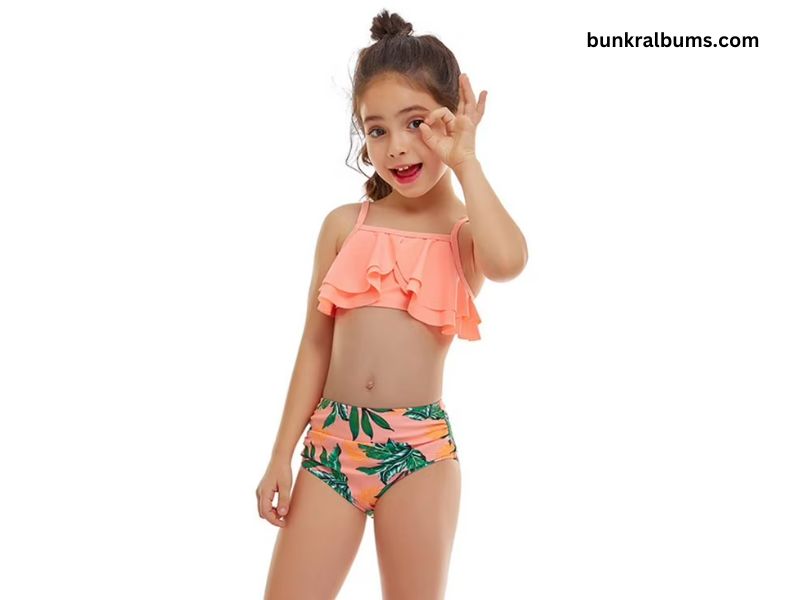The question of what constitutes an appropriate bathing suit for a 12-year-old is one that many parents, guardians, and even retailers have found themselves grappling with in recent years. In a society where fashion trends often blur the lines between child and adult clothing, determining what is appropriate for pre-teens can be complex. While beachwear is meant to be a functional and comfortable attire for enjoying the water, there has been growing concern about the types of bathing suits being marketed to, and worn by, children, particularly those in the 12-year-old age group. This article explores the issue of inappropriate bathing suits for pre-teens, delving into what constitutes “inappropriate” attire, the cultural and societal influences contributing to the trend, the implications for child development, and the role of parents and guardians in guiding young individuals toward suitable choices.
The Pressure to Grow Up Too Quickly
The issue of inappropriate bathing suits for 12-year-olds cannot be separated from the larger issue of children growing up too quickly in today’s hyper-sexualized world. The transition from childhood to adolescence is a delicate and formative stage in a young person’s life, and there is a constant push from society—through media, advertising, and even peer pressure—to accelerate that transition.
At the age of 12, many children are beginning to experience physical changes that are part of puberty. Some may start to develop curves and more noticeable physical characteristics that set them apart from their younger peers. While these changes are natural, they can also make it easier for certain clothing brands to target young pre-teens with adult-like swimwear that accentuates, rather than downplays, these developing features. Swimwear that is designed for older teens or even adults, with designs such as revealing cuts, plunging necklines, and high-cut bottoms, may appeal to young girls who want to fit in with older adolescents or mimic what they see in pop culture. However, this type of swimwear can be seen as inappropriate for 12-year-olds because it often prioritizes style over comfort and function and may be too revealing for their age.
What Defines “Inappropriate” Swimwear?
To understand what is deemed “inappropriate” for a 12-year-old, it is important to first define the parameters of appropriateness. While opinions on this matter can vary based on cultural norms, personal values, and even regional preferences, several general principles can guide the determination of what is suitable for young children and pre-teens.
- Revealing Cuts and Designs: Bathing suits with plunging necklines, low-cut backs, or side cutouts are often marketed to older teens and adults. When these designs are applied to children’s swimwear, they can be seen as inappropriate because they draw attention to areas of the body that may not be appropriate to highlight at such a young age. For example, a one-piece bathing suit with a deep V-neck or a bikini with excessively skimpy bottoms can sexualize a 12-year-old’s body, even if that is not the intent.
- Bikinis and Thongs: While it is not inherently wrong for a pre-teen to wear a bikini, the style of the bikini matters. A bikini with extremely small bottoms or a thong-style bottom can be problematic. A thong, by nature, exposes more of the body and may be seen as inappropriate because it draws attention to the areas of the body that are not typically the focus for children. The same concerns apply to other styles of swimwear that expose the midriff or have a design that is suggestive of adult swimwear.
- Body-Conscious Swimwear: Tight, body-hugging swimsuits that accentuate a young child’s developing curves can be concerning. While it is natural for pre-teens to start developing bodies, clothing that fits too tightly or emphasizes body shape can sometimes lead to body image issues and make young children feel self-conscious about their appearance. For 12-year-olds, the focus should ideally be on comfortable, practical swimwear that allows them to enjoy water-based activities without feeling overly exposed or uncomfortable.
- Sexualized Images and Branding: Some bathing suits come with imagery or branding that sexualizes young girls, whether through suggestive slogans, prints, or advertisements. These swimsuits are often marketed in a way that appeals to pre-teens who may want to look more “grown-up.” For example, swimwear that features images of pin-up girls, seductive poses, or slogans with sexual innuendo is particularly inappropriate for children and can send harmful messages about body image, self-worth, and femininity.
The Role of Media and Commercialization
The prevalence of inappropriate bathing suits for 12-year-olds cannot be divorced from the impact of media and commercialization. Advertisements, social media influencers, and popular culture have created a beauty standard that often emphasizes thinness, sexualization, and an adultified version of femininity. Young girls are exposed to these standards at an increasingly early age. Many of the swimsuits that are marketed toward children are designed to reflect these adult ideals, blurring the lines between childhood innocence and sexual maturity.
The rise of social media platforms like Instagram and TikTok has also contributed to this trend. Many influencers, even those who cater to a young audience, often promote swimwear that might be considered inappropriate for children. This creates an environment where young girls may feel pressured to conform to what they see online, including wearing swimsuits that are less age-appropriate. It is not uncommon for pre-teens to look up to celebrities or influencers and desire to emulate their styles, even if those styles are not suitable for their developmental stage.
Retailers, in turn, often cater to this demand by offering swimwear that mimics the adult styles that are trending at the moment. However, the question remains whether these swimwear designs are appropriate for children, particularly in a world where young girls are already bombarded with unrealistic beauty standards.
The Impact on Child Development
The pressure to look and dress like an adult can have negative effects on a child’s emotional and psychological development. Adolescence is a time of self-discovery, and part of that process involves understanding one’s identity in a healthy, age-appropriate way. When young girls are encouraged to wear revealing or body-conscious swimwear, they may begin to focus more on how they look rather than on who they are. This shift can contribute to issues such as body dysmorphia, low self-esteem, and an unhealthy obsession with appearance.
Furthermore, wearing overly sexualized or adult-like clothing at a young age may lead to premature sexualization, which can affect how girls view their own bodies and how they are perceived by others. This early introduction to adult themes through clothing can result in children feeling uncomfortable or anxious about their bodies before they are emotionally ready to deal with those feelings.
There are also social implications to consider. A 12-year-old girl who is dressed in an outfit that is more suitable for an adult may face unwanted attention or even sexual harassment. This is particularly concerning as many children at this age are not yet equipped to handle or understand these types of interactions.
Parental Guidance: Navigating the Choices
As with all aspects of a child’s upbringing, parents and guardians play a critical role in guiding their children through the process of selecting appropriate clothing, including bathing suits. For parents, it is important to take an active role in helping their children make choices that are not only age-appropriate but that will also contribute to their well-being and self-esteem.
- Open Conversations: Parents should engage in open, age-appropriate conversations with their children about the importance of wearing modest and functional clothing that makes them feel comfortable and confident. This may include discussing the potential downsides of wearing revealing or overly sexualized swimwear, and emphasizing the importance of feeling good in one’s skin without seeking validation from others.
- Understanding Trends and Peer Pressure: It’s important for parents to be aware of the trends their children are exposed to, especially through social media and the influencers they follow. Discussing the difference between fashion trends and what is appropriate for their age can help children understand how to make thoughtful decisions about their wardrobe.
- Setting Boundaries: Setting clear boundaries around what is acceptable and appropriate swimwear is essential. This may involve limiting the types of swimsuits a child can purchase or wear based on the appropriateness of the style. Parents should be firm but understanding in their approach, explaining their reasoning in ways that the child can understand.
Conclusion
Inappropriate bathing suits for 12-year-olds are a reflection of broader cultural trends that sexualize young children, particularly girls. As children are increasingly exposed to adultized fashion choices through media, advertising, and social platforms, it is essential for parents and guardians to guide their children in making age-appropriate decisions about swimwear. By focusing on comfort, modesty, and functionality, parents can help ensure that young girls enjoy their childhoods without the pressure to conform to adult beauty standards. As society continues to evolve, it will be critical to prioritize the well-being of children, ensuring that they are not prematurely sexualized through their clothing choices.







